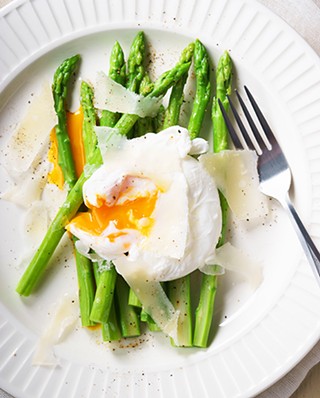Eggs have been a symbol of spring for centuries, long before the advent of Christianity and our modern hunts for Easter eggs. The ancient Greeks, Romans and Egyptians all had beliefs relating to eggs and the creation of the universe, that the earth itself was born out of an egg. Cultures around the world decorate eggs to exchange as gifts of goodwill and to celebrate the coming of a new season. The modern custom of dying eggs for Easter stems from these pre-Christian cultures, which came to see eggs as a manifestation of spring and new of life emerging after a long winter. This pagan tradition of dying eggs to celebrate the warmth of the spring sun translated nicely to the Christian celebration of Easter, especially when eggs were forbidden in the 40 days of Lent.
The association of eggs with springtime should make sense to anyone who raises their own hens. If the idea intrigues you, check out Backyard Chickens 101 on page 15. During the darkest weeks of winter, a chicken's egg output will decrease due to the reduced hours of sunlight each day. This is because when a hen's retina detects light it stimulates the production of reproductive hormones, so fewer hours of sunlight means fewer eggs. What may have been a meager supply over the winter suddenly becomes generous as the days lengthen.
Regardless of how they're prepared, eggs provide powerful nutrition including protein, beneficial fats and loads of vitamins. We love them for breakfast in large part because they're fast and easy to prepare, but don't count them out for dinner. Eggs can be incredibly elegant thanks to their magical ability to create their own luxurious sauce, perfect for tossing with pasta or topping a bunch of perfectly steamed asparagus. They can also brighten up and fortify devastatingly simple yet delicious dishes, whether it's finely chopped hard-boiled egg on top of caviar or scrambled alongside buttered toast.
Perfectly poached
Poached eggs always feel fancy, thanks to their association with luxe brunch dishes like eggs Benedict. What's awesome about them, especially for entertaining, is that they can be made ahead, chilled and stored in cold water for three days before quickly rewarming in hot water just before serving. I prefer to use a wide Dutch oven-type pot filled with two quarts of water. Bring to a simmer and add a tablespoon of white or cider vinegar. Working one at a time, crack up to six eggs over a slotted spoon to allow the watery portion to drain away, then gently slip them into the simmering water, spacing them evenly around the pot. Cover the pot and take it off the stove to sit for three to four minutes, depending on how runny you want the yolks. Carefully remove each egg with a slotted spoon and drain briefly before serving or transfer it gently into a dish of ice water to stop it cooking. Rewarm poached eggs in hot water that's just below simmering, about 150 degrees, for two minutes. Poached eggs are delicious in a bowl of ramen, on top of a mixed green salad (Try poaching them in dry red or white wine!), or over asparagus with a sprinkle of crispy garlic breadcrumbs and spring chives.
Hard- or soft-boiled
There are countless ways to hard or soft cook an egg, but it turns out that steaming is the most effective method because the temperature of steam is much more consistent than the temperature of water boiling in a pot, where the eggs on the bottom of a pot of boiling water will be exposed to more heat. To steam eggs, bring a couple inches of water to a boil in a saucepan with a tight-fitting lid. When the water boils, place fridge cold eggs in a steamer basket, lower it into the saucepan and cover. For soft boiled eggs, steam for six minutes. For eggs with a slightly gummy center, cook for 10-11 minutes. For hard-cooked eggs, cook for 12 minutes. Remove the eggs and place in a bowl of cold tap water until cool enough to handle, then gently crack the shell by tapping it on the counter, then slip your finger under the membrane separating the white from the shell. Serve warm or cool completely to slice for salads or to make deviled eggs.
Scrambled
It's hard to mess up a scramble, but small additions and techniques can have a huge impact. For the fluffiest scrambled eggs, beat in one tablespoon of water per egg before pouring them into the hot skillet. The water basically steams the egg from the inside out while cooking, resulting in an extra fluffy scramble. If creamy eggs are what you crave, swap out milk or cream for the water. Browning the butter in the skillet before adding the eggs is another opportunity to add a layer of flavor. Add the eggs to the hot butter in the skillet and stir until they begin to look slightly curdled, then lower the heat and gently fold the lumpy egg mixture over itself while shaking the pan. When the eggs are just barely set, transfer to a warmed plate and let rest for a minute to let the egg finish cooking before serving.


















